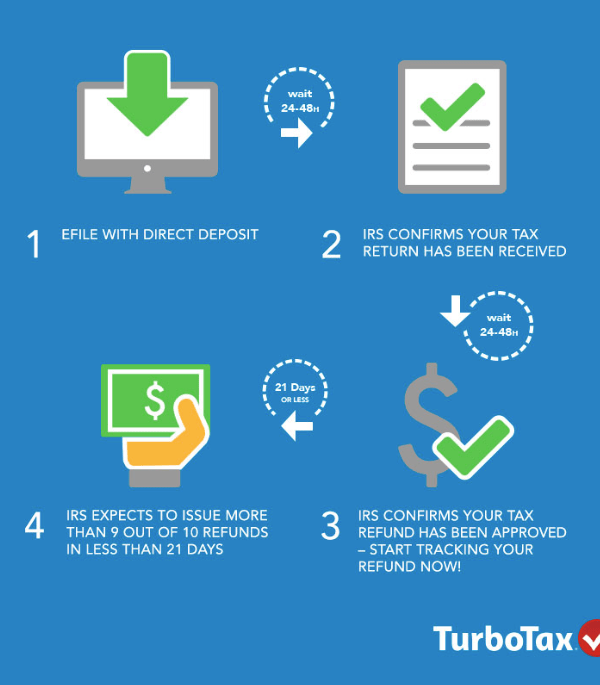[ad_1]
The average direct deposit tax refund was close to $3,100 last tax season, and with tax season well underway, it’s no surprise that the most common tax season-related question we’re now hearing is: “Where’s my refund?”
The time it takes the IRS to process your tax refund is based on how you chose to file your tax return – either e-file or by mail.
- E-filed tax returns with direct deposit: E-file with direct deposit is the fastest way to get your federal tax refund. Typically, the IRS expects to issue nine out of 10 tax refunds within 21 days after acceptance if there are no issues.
- Mailed paper returns: Avoiding a paper return is more important than ever to avoid refund delays. The IRS cautions if you need your refund quickly do not file on paper. Usually, the IRS says to allow 4 weeks before checking the status of your refund, and that refund processing can take 6 to 8 weeks from the date the IRS receives your return.
Tax Refund Processing
- Start checking status 24 – 48 hours after e-file: Once you have e-filed your tax return, you can check your status using the IRS Where’s My Refund? tool. You will need your Social security number or ITIN, your filing status, and your exact refund amount.
- Return Received Notice within 24 – 48 hours after e-file: The IRS Where’s My Refund? tool will show “Return Received” status once they begin processing your tax return. You will need the following information when checking refund status: Social security number or ITIN, your filing status, and your exact federal tax refund amount shown on the tax return. You will not see a tax refund date until the IRS finishes processing your tax return and approves your tax refund.
- Status change from “Return Received” to “Refund Approved”: Once the IRS finishes processing your tax return and confirms your tax refund is approved, your status will change from “Return Received” to “Refund Approved.” The change in status can take a few days, and a tax refund date will not be provided in Where’s My Refund? until your tax return is processed and your tax refund is approved.
- Where’s My Refund? tool shows refund date: The IRS will provide a personalized refund date once your status moves to “Refund Approved.”
- Where’s My Refund? shows “Refund Sent”: If the status in Where’s My Refund? shows “Refund Sent,” the IRS has sent your tax refund to your financial institution for direct deposit. It can take 1 to 5 days for your financial institution to deposit funds into your account. If you opted to receive your tax refund via mail, it could take several weeks for your check to arrive.
You could experience delays in receiving your tax refund if your return:
- Includes errors – The IRS has indicated that your refund could be delayed if the information you provided on your tax return does not match the IRS records.
- Is incomplete – If you didn’t have all of your documents and filed an inaccurate return
- Needs further review in general
- Is affected by identity theft or fraud
- Includes Earned Income Tax Credit or an Additional Child Tax Credit – Under the Path Act, the IRS cannot issue a refund involving the Earned Income Tax Credit or Additional Child Tax Credit before mid-February.
- Includes a Form 8379, Injured Spouse Allocation PDF, which could take up to 14 weeks to process
Tax Refund Status FAQ
Will I see a date right away when I check the status in “Where’s My Refund”?
The IRS Where’s My Refund? tool will not give you a date until your tax return is received, and processed, and your tax refund is approved by the IRS.
It’s been longer than 21 days since the IRS has received my tax return, and I have not received my tax refund. What’s happening?
Some tax returns take longer than others to process depending on your tax situation. Some of the reasons it may take longer include incomplete information, an error, or the IRS may need to review it further.
I requested my money be automatically deposited into my bank account, but I was mailed a check. What happened?
The IRS is limiting the number of direct deposits that go into a single bank account or prepaid debit card to three tax refunds per year. Your limit may have been exceeded. In addition, for a small number of returns, the IRS decides there may be indications that the bank account on the return is suspicious and they may decide to issue a check instead.
2,009 responses to “Where’s My Tax Refund? How to Check Your Refund Status”
[ad_2]
Source link









